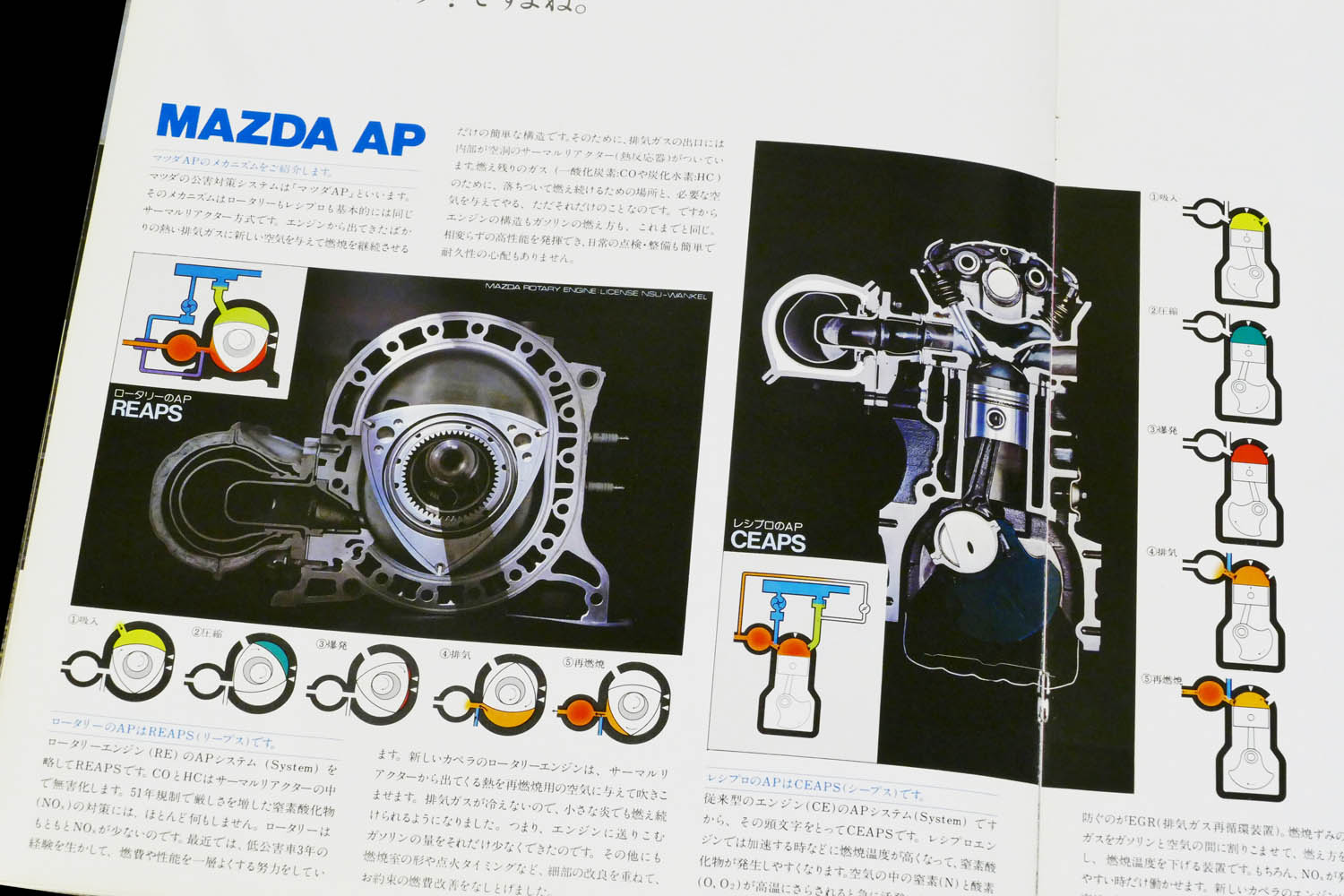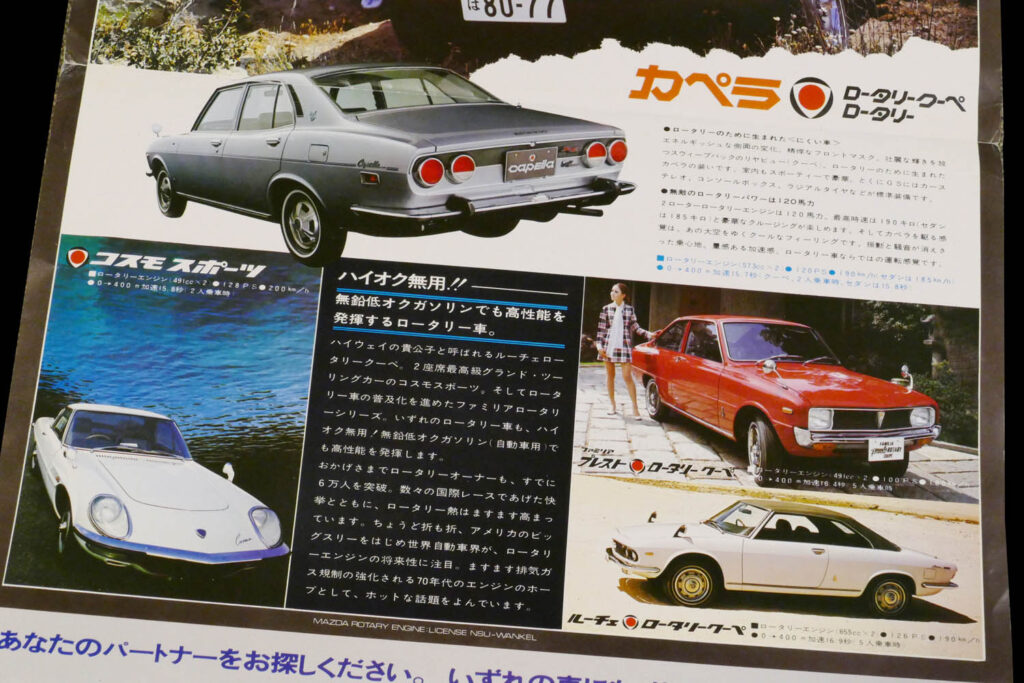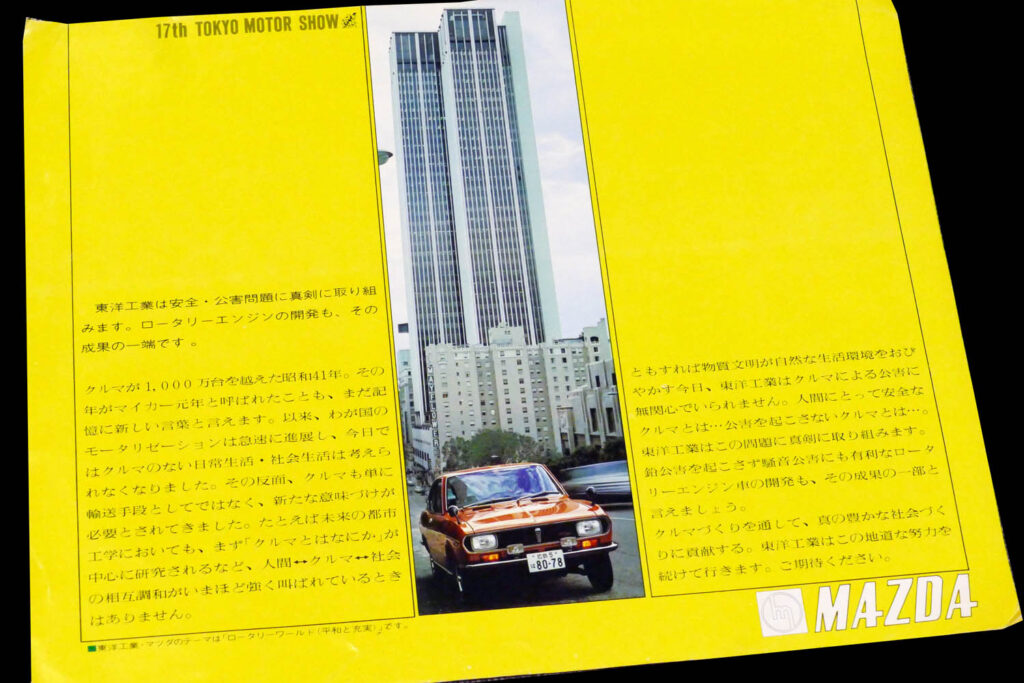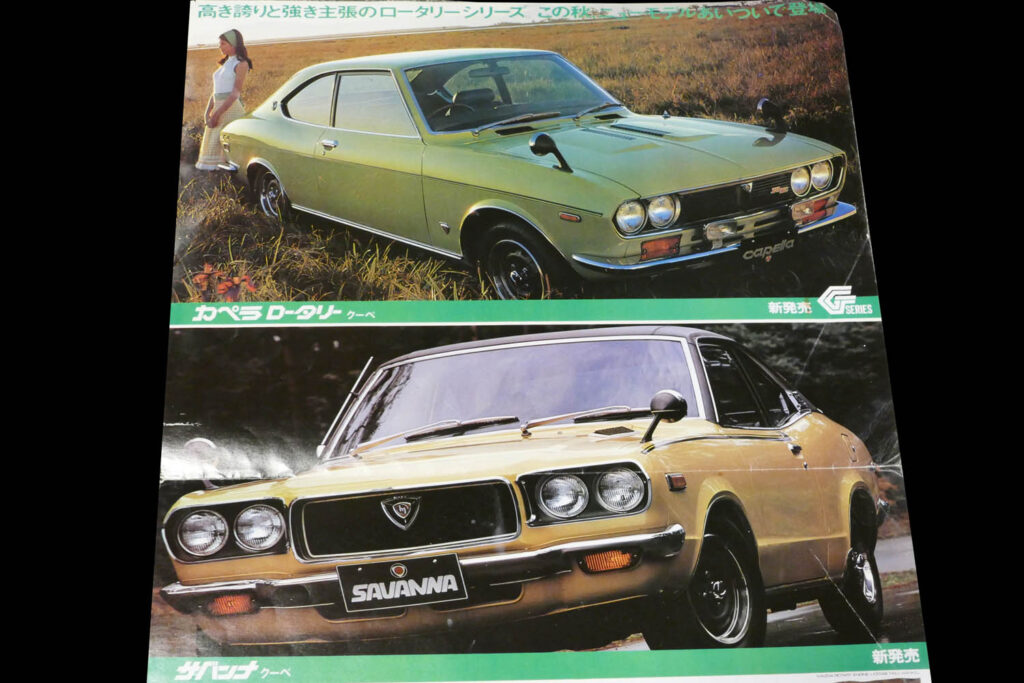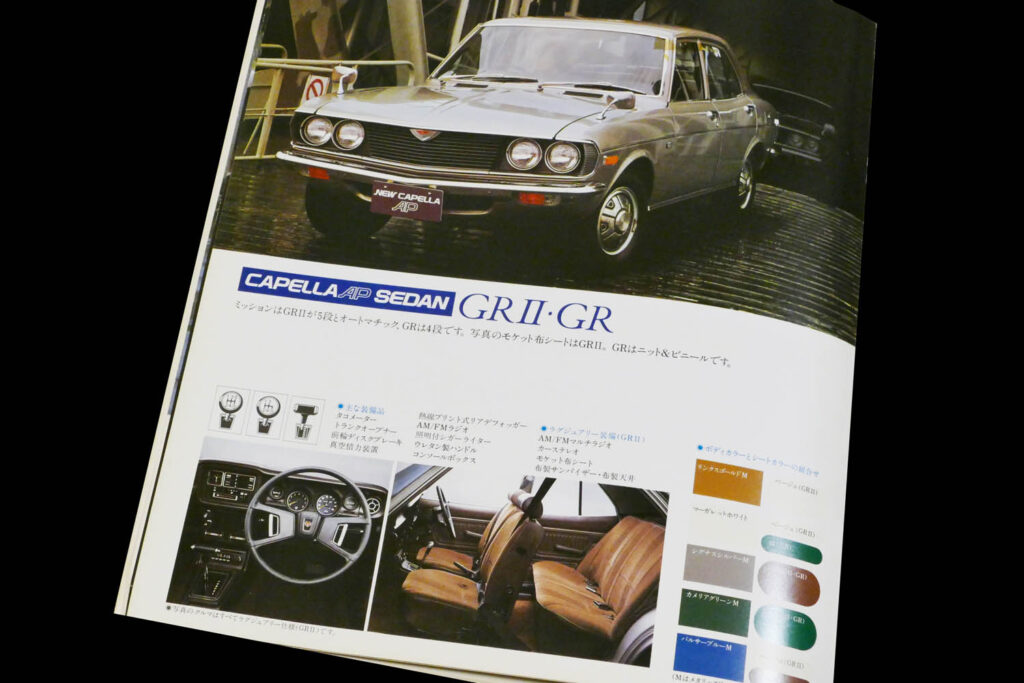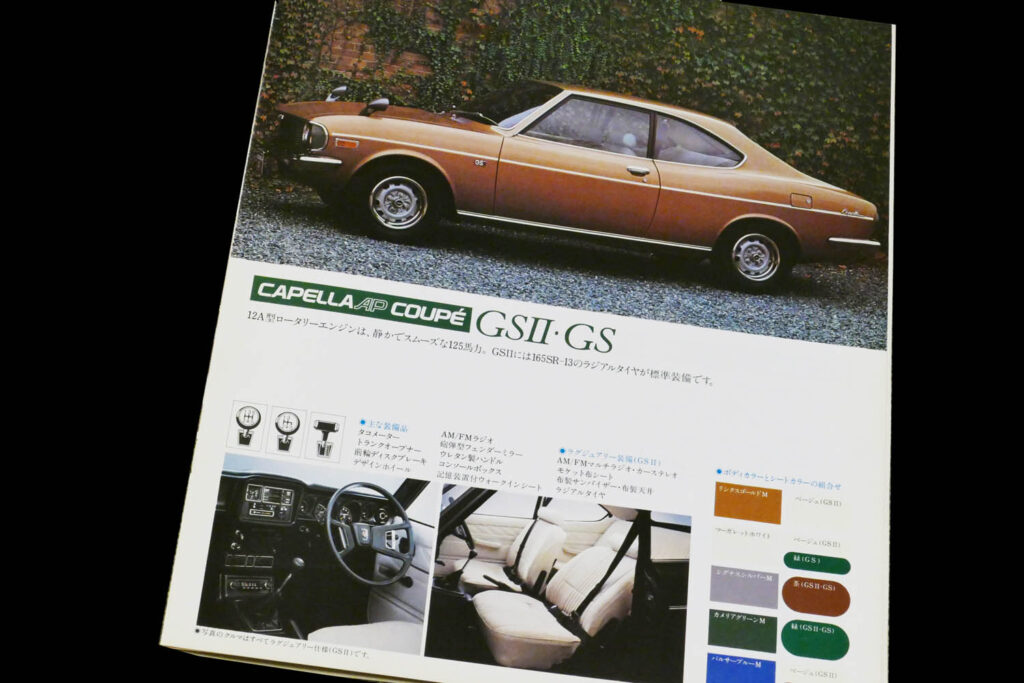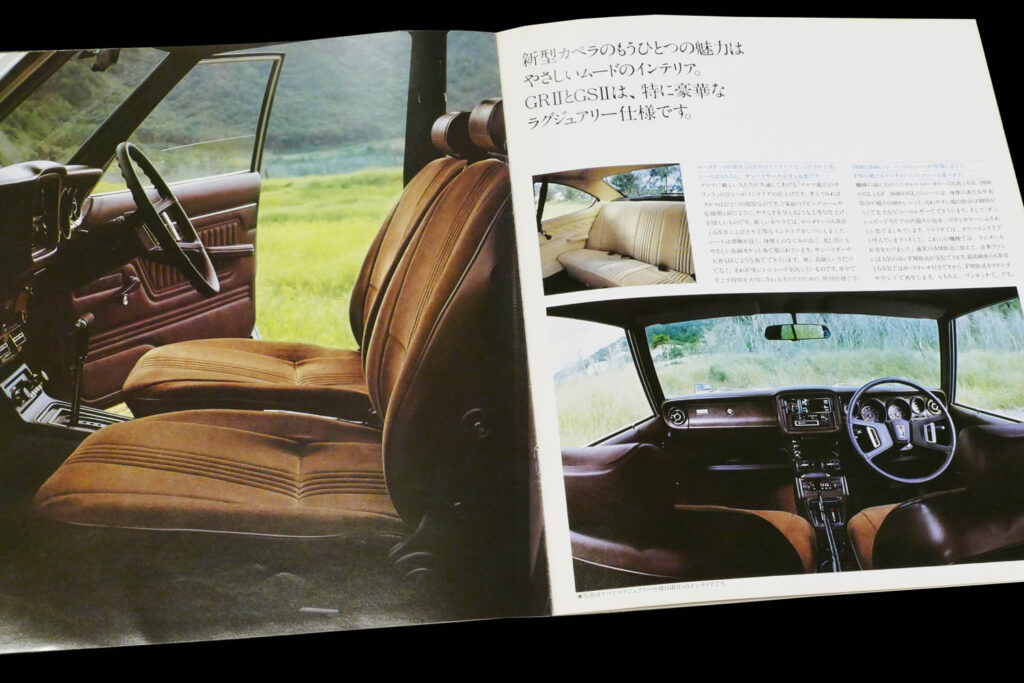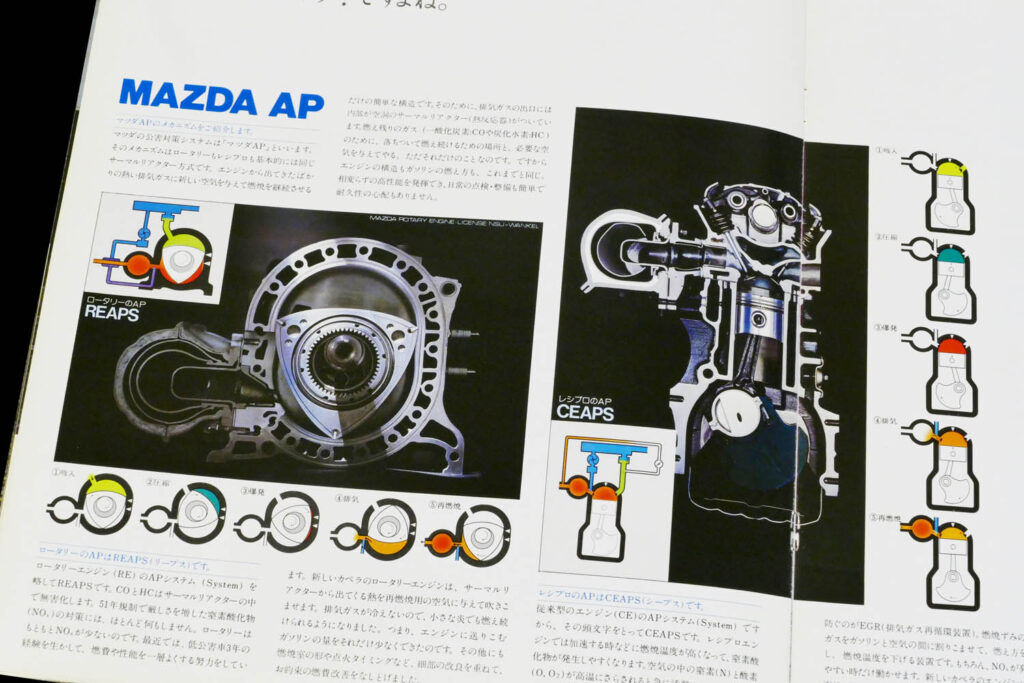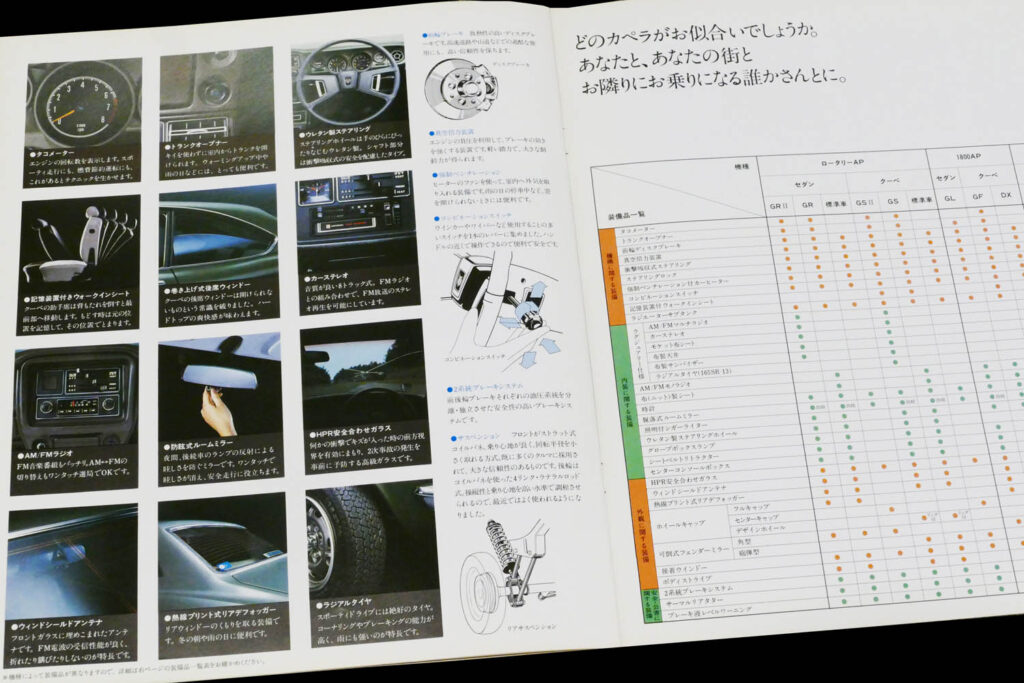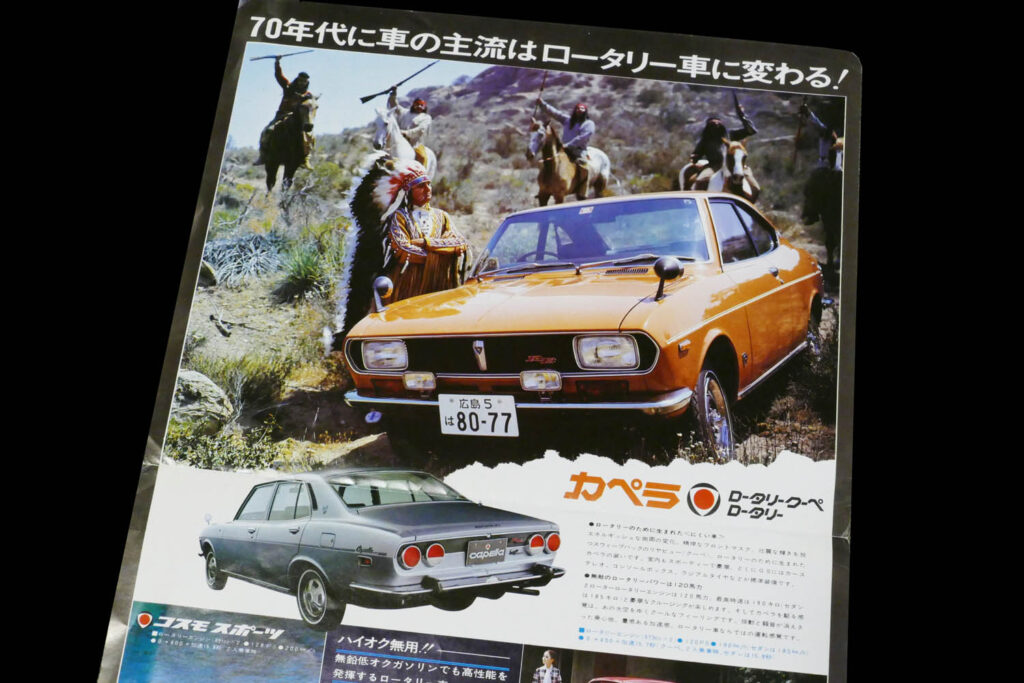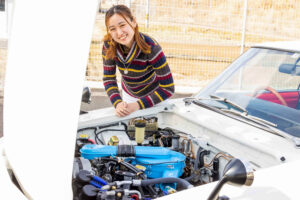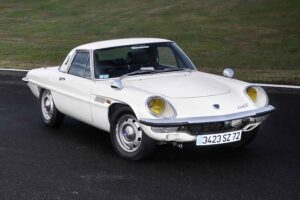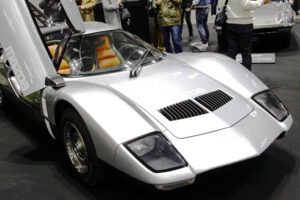The car boasted a top speed of 190 km/h and a 0-400 m time of 15.7 seconds
The 17th Tokyo Motor Show brochure treated it as the top production car of the year, with the headline “In the 1970s, cars will turn to rotary cars!” The Cosmo Sport, Luce Rotary Coupe, and Familia Rotary Coupe, all of which had been equipped with rotary engines, appeared on the page with the headline “Rotary cars will become the mainstream in the 70s”.
The orange Capella shown in the photo is the color of the coupe when it appeared, along with the rear view of the sedan, which shows the RE badge and round four-lamp taillights. Specifications included a rotary engine (573 cc x 2), 120 hp, 190 km/h (185 km/h for the sedan), and 0-400 m acceleration of 15.7 seconds (coupe, two-seater. Sedan is listed as 15.8 seconds).
There is another part of the motor show brochure, the 18th edition, which includes a photo of the G-series (see below) with round four-lamp headlights, and below it a nostalgic image of the newly introduced first-generation Savannah.
In 1974, the G series developed into the ‘second generation’.
The sole Capella catalog is from the G-series. It is believed to be dated October 1975, as the cover has the words ’51 years compliant’, which represents the level of exhaust emission regulations at the time. According to Mazda documentation, this generation, which was introduced in February 1974, was the second generation, and changes compared to the first generation included a 110 mm longer nose section for pollution control improved cooling performance, and a new instrument panel with a quadruple meter.
Of course, the rotary engine was also introduced in this catalog. The 12A rotary engine at this time had a maximum output of 125 hp/6500 rpm and a maximum torque of 16.5 kgm/4000 rpm, and the transmission was a 3-speed AT, as for manual transmissions, the Sedan GRII/Coupe GSII had a 5-speed and the Sedan GR/Coupe GS had a 4-speed The fact that manual transmissions were available is also not to be overlooked.
translated by DeepL





